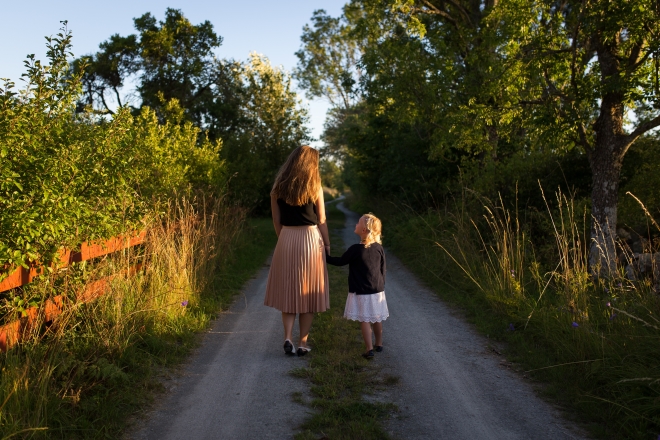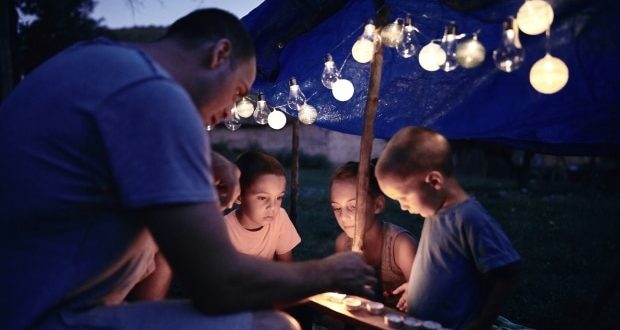It’s not unusual for students and parents alike to experience anxiety as the new school year approaches. After months of enjoying their summer vacation, it can be unnerving to think of back-to-school preparation.
It’s difficult for kids to get back into the swing of things once school rolls around. This change of routine may very well be difficult for you as well.
But it’s possible to make this transition period much easier for you, your spouse, and your children. Here’s some back to school preparation to help the whole family get ready for the new school year:
1. Routine
The morning routine before school starts may cause the most anxiety for parents and their children. Waking up on time, getting dressed, eating breakfast, packing a lunch, combing hair, brushing teeth, and making sure your kids do the same is just a few mandatory steps of every before-school morning routine.
It’s clear why mornings can be so chaotic: one misstep, like dealing with a difficult child, and a carefully cultivated routine can spiral out of control.
No matter what type of chaos you may face in the mornings, there are steps you can implement to create a more relaxed yet efficient routine. Here are a few suggestions to improve your before-school morning routine:
Start with a Nighttime Routine
Establishing a nighttime routine is paramount. It should come as no surprise that kids need structure to thrive. When there is a set time for schoolwork, chores, socializing, and other activities, everyone in the household knows what is expected of them at any given time. When your family settles into an established routine, morning and night, things run more smoothly.
Sleep Schedule
The importance of implementing a regular sleeping schedule cannot be stressed enough. Waking up at the same time every day is vital for a child’s growth and development.
Studies have been conducted with results indicating that a consistent sleep schedule can positively impact your child’s focus and behavior, even on weekends and vacations. Reportedly, children with regular sleeping schedules:
- Have a better attention span
- Have greater cognitive functioning abilities
- Practice better hygiene
- Form better habits
On the other hand, an irregular sleep schedule disrupts the circadian rhythm, leading to sleep deprivation. This not only can cause health concerns but sleep deprivation is also linked to significant behavioral problems.
Making sure your child has enough sleep each night is a sure way to avoid any groggy or grumpy mornings. If you are unsure of the amount of sleep your child needs, follow the chart below:
|
|
Age Range |
Recommended Hours of Sleep |
|
Newborn |
0 to 3 months old |
14 to 17 hours |
|
Infant |
4 to 11 months old |
12 to 15 hours |
|
Toddler |
1 to 2 years old |
11 to 14 hours |
|
Preschooler |
3 to 5 years old |
10 to 13 hours |
|
School-age |
6 to 12 years old |
9 to 11 hours |
|
Teenage |
13 to 18 years old |
8 to 10 hours |
Prep the Night Before
Part of your nightly routine should be preparing for the next morning. The more you can do at night, the less you have to worry about in the morning. Some suggestions as to what you could prepare before bedtime include:
- Packing lunches
- Making sure all school supplies are where they need to be– double-check that the necessary books, binders, other supplies, and homework are in your child’s backpack
- Have outfits (including shoes!) picked out and easily accessible
Younger children may need more help with morning preparation as part of their nighttime routine, but be sure to also encourage your teens to do the same prep for themselves.
2. Organize your Home
Ensuring that everyone’s belongings have a designated place is a good way to make things run more smoothly each morning. Invest in some organizational materials – bins, hooks, even a label-maker could be helpful. These tools can help simplify the process of getting ready in the morning.
You may also want to purchase a dry erase calendar to keep on the fridge or another place where the whole family will see it daily. Writing out each others’ schedules will help everyone stay on the same page about who needs to be where and when.
3. Get Yourself Ready First
Wake up earlier than the rest of your family. Taking a few moments to enjoy your first cup of coffee by yourself will help set the tone for your day, which will be significantly more relaxed than if you were to try to compete for bathroom time and whatever else while everyone else is scrambling to get ready at the same time.
Not only will you be able to get yourself ready for the day with much less chaos, but you will also have time to get yourself in a positive state of mind before the kids wake up. If your children wake up to greet an awake and happy version of you, then the tone for their day is likely to be much more positive too.
4. Make Time for Breakfast
All too often, we skip the most important meal of the day: breakfast. This is a bad habit that many of us need to break and make sure that our children don’t pick up.
A good, healthy breakfast should be a part of every morning routine. It may require everyone to wake up a bit earlier. Still, sharing a balanced breakfast as a family is not only beneficial in terms of nutrients, it can also help to bring families closer together.
If you share custody of your child, if, at all possible, you may want to ask the other parents to adopt the same routine for your child in their home. This consistent structure is especially important if your child spends a considerable amount of time between both households. Disruptions to this regular routine can cause anxiety and break good habits.

5. Clothing
Adults choose to show off their personality through fashion, so it’s normal for kids to want to express themselves through their clothing choices too. However, since kids are still growing, they need new clothes more often than most adults do.
As a parent, trying to make sure that you get your money’s worth out of the wear time of your kids’ clothes while attempting to keep up with the newest trends can be tricky.
Shopping for new school clothes can be hectic, especially if you need to be mindful of a budget. However, having an idea of some of the fashionable (and budget-friendly) styles can help make back-to-school shopping easier. Here are a few trendy ideas:
The Classic T-shirt and Jeans Combo
This combination never goes out of style. Plus, the pieces to form this outfit can be found at nearly any store, even at low price points, which means that it can make both you and your child very happy.
Oversized Sweatshirts and Cool Sweatpants
Wearing pajamas daily throughout 2020 has taught us all that comfort is key. These “real clothes” options provide a similar level of comfort while still looking socially acceptable.
Vibrant Colors
One of the top trends right now is to wear the same color from head to toe. Another fashionable option is tie-dye patterns. Bright colors are “in.”
The early 2000s and 1990s Fashion Pieces are Making a Resurgence
There may be a chance that you could raid your own closet for pieces that your child may want to wear. Another option is to hit up a local Salvation Army. This trend is not only budget-friendly, but it’s also good for the environment too.
Remember: the most fashionable thing your child, or anyone else, can wear is something that makes them feel good about themselves. It’s not necessary to follow every trend. The coolest thing you can encourage your child to do is simply to do what makes them happy and be true to themself.
6. Transportation
You may be responsible for transporting your child back and forth to school daily, but there may be times when alternative transportation may be necessary.
You may consider allowing your child to walk, bike, take the bus, or be part of a carpool to get to school. No matter which option you may choose, there are factors to ponder and discuss to prevent any potential mishaps:
Carpooling
If you have a network of trusted friends and family, carpooling can be a great resource.
Pros of Carpooling:
- Your child will have an opportunity to interact with their peers and other adults, which can help your child build better social skills
- The opportunity to make new friends
- It takes some of the responsibility off of one adult driver
- More environmental friendly
Cons of Carpooling:
- Limited flexibility in your schedule on days that you are the driver
- Punctuality can be a tough demand and cause stress
- This option doesn’t work without solid trust
- You need to trust that the driver will use all necessary safety precautions. The vehicle must be equipped with proper and age-appropriate safety seats — failing to adhere to this can increase the risk of injury if your child is involved in a car accident
Conclusion: This option is great for parents with a close-knit group of friends who have children attending the same school. Trust must be established to make carpooling work; otherwise, stress can cause major tensions between parents. There is potential for drama to occur with this transportation option.
School Bus
School buses are one of the primary modes of transportation for students to get to and from school.
Pros of letting your child take the School Bus:
- It’s convenient
- It has the potential to save you money, especially on fuel
- Friendships can be formed between your child and other kids that also take the school bus
- It teaches your child responsibility and allows them to have a bit more independence
- It’s safe — school buses are actually the safest vehicles on the road
- It’s environmentally friendly
Cons of letting your child take the School Bus:
- Strict schedules
- School bus drivers must adhere to strict schedules, so they do not accommodate after-school activities or any other special circumstances
- Missing the bus
- Due to the strict schedules school, bus drivers must adhere to, they will not wait for any students that are not on time to get on the bus
- Student supervision
- School bus drivers must focus on the road, which means that students are often left to their own devices. Bullying, fighting, and injuries are often reported to occur on school buses.
- Time
- The commute to and from school is significantly more time consuming due to the numerous stops that a bus driver must make
Conclusion: This option is ideal for children that can be trusted to behave without much supervision and are responsible. It is important to become familiar with bus stops and the route that the bus driver is meant to take while transporting students. Although it is unlikely that anything unfortunate will happen, knowing where your child is at all times should give you some peace of mind.

Walking or Riding a Bike to School
If you are fortunate enough to live close to your child’s school, walking or riding a bike may be a viable option for transportation.
Pros of Walking or Biking to School:
- Exercise
- Environmentally friendly
Cons of Walking or Biking to School:
- Dangerous
- According to CDC data released in 2013, one in every five children killed in traffic accidents were pedestrians.
- If your child plans to ride their bike, be sure that they wear a safety helmet
Conclusions: Experts urge parents to accompany their children on their way to school, especially if they are under 10 years old and are walking or biking.
7. Health
If we have learned anything from the COVID-19 pandemic, we need to care for our health. Provided are some tips to keep your family in good health:
Sleep
The importance of getting restful sleep cannot be emphasized enough, especially for growing children.
Healthy Meals
It may be a struggle to get your kids to eat their veggies and pick healthy snacks over sugary treats. But it is important to encourage a healthy diet nonetheless.
The Mayo Clinic recommends opting for nutrient-dense foods and incorporating the following into your child’s diet:
- Proteins –seafood, lean meat and poultry, eggs, beans, peas, soy products, and unsalted nuts and seeds.
- Fruits — a variety of fresh, canned, frozen, or dried fruits
- Vegetables — a variety of fresh, canned, frozen, or dried vegetables
- Grains — whole-wheat bread, oatmeal, popcorn, quinoa, or brown or wild rice.
- Dairy — fat-free or low-fat dairy products, such as milk, yogurt, cheese, or fortified soy beverages.
Aim to Limit:
- Added sugar
- Saturated and trans fats
- Sodium
Dental Check
It is always a wise idea to schedule a dental check-up before the school year starts. Regular appointments with a dentist are sure to avoid poor oral health, including gum disease, cavities, and tooth decay.
Hand Sanitizer
Kids spread germs easily, especially in public settings. Arm your child with hand sanitizer to combat these germs. Hand sanitizer is not a replacement for hand washing, but it is a helpful tool to keep handy when resisting germs.
Advise your child to use it before lunch and after recess. A little practical hygiene can help prevent the spread of unwanted illnesses in your household.
Finally, there are many other ways to prepare for back to school. Hopefully, these suggestions will help you and your family adjust to the new school year.







We are really astounded to realize that it is already back to school and you are trying to help parents. We are also incline to that. We love how children gets to experience things with their parents. This is our website please feel free to visit http://www.opal-academy.com